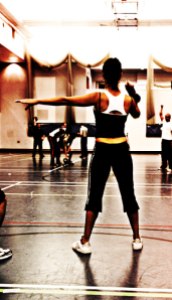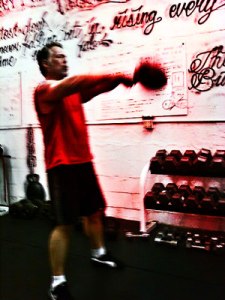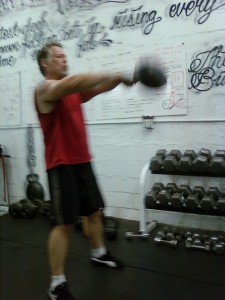This is part 3 of the How to workout for busy people series (click here for Part 1 and Part 2), in which we’ll focus on conditioning.
Different types of Conditioning
Yes, there are different types. But, for practical purposes let’s focus on long sessions and short sessions. To build an all

Steady state for long sessions will get you the desired results. Be them bodycomposition, endurance or recuperating ability
around conditioned body, you’ll have to do BOTH. Since time is an issue in this series, we’ll try to be as efficient as possible.
Training in long sessions will be focused on steady state cardio. I know, I must be from a different day and age if I believe this to be necessary (and you’re busy people, how dare I?). But if you think that it’s ineffective as conditioning (we’re not talking fatloss) then you have a different thing coming. Doing over 90 minutes in a row will not only improve your conditioning and endurance, but will also vastly improve your mental toughness and body composition (there, I said it).
Short duration training is where HIIT will work best. There are literally thousands of routines scattered all over the web. It’s effective, efficient and to the point, which is what busy people are all about. It will be simple, not easy.
Frequency
This one you should be playing by ear, I’d love to say you’ll have to do X amount a week, but truth be told, this workouts should leave you gassed. But I still advocate for higher frequency. So, if you plan on doing 15 minutes per session, think about going 5 times a week with short duration workouts, and once a week for long sessions. I recommend doing 30 minutes of HIIT and 90 minutes of steady state workouts.
The recommended prescription is 3 HIITs + 1 steady state workouts per week.
The Busy People Workouts
I’ll put 3 protocols for you to follow. Even though most modalities can be adapted to them, I’ll put what I found to be the best to apply it.
On the top of every minute
Choose 1 or 2 exercises (that complement each other), and set a timer to announce the start of every minute. You’ll be doing a fixed set and rest what remains of the minute.
Progress: Every time you hit the amount of reps, add 1 to every set. Once you start getting only 20 seconds of rest, choose a harder variation or add weight.
Recommended: Kettlebell swings, snatches, bodyweight squats.
As Many Rounds As Possible
This popularized by Crossfit method is as effective and brutal as they come.
Pick a sequence of exercises that will cover your bases (a push, a pull, a hip hinge, a squat, a core). Set a timer for the allotted time and do between 3 and 5 reps per exercise. You’ll keep going through the circuit until the time finishes.
Progress: Take note of how many circuits you finished. Next time you’ll have to do more.
Recommended: Bodyweight exercises and Kettlebells will probably go a longer way. Pick variations/weights you can do 10 reps with and do 5 per set.
Sprint ladders
Effective as hell but they will beat you. Choose 3 different distances (30m, 60m, 100m (that’s meters)). You’ll sprint the first distance, return jogging to the start line; run the second distance, jog back to the beginning; sprint the third, walk back to the beginning and start over. Do this 5 times. You’ll feel amazing after it (well, maybe not directly after it, it may take some recovery).
Progress: just add ladders, or go by rungs. Ideally you’ll always go balls out and progress will be slow.
You may switch this for kb snatches or swings.
Long sessions.
Feel free to keep this as optional, and if needed do it on the weekend. Do 90 minutes of whatever you enjoy the most. Keep it light and keep it constant. Don’t stop before the 90 minutes are up.
What? No tabatas?
No. Hell no. What most people know as Tabatas are a watered down, bullshit ridden imitation of the protocol. There’s four reasons why I don’t put them here:
- The tabata protocol calls for 20 seconds of intense, balls to the wall, execution, and 10 seconds of active rest with lighter movement (like jogging is to sprints). Please tell me how you’re managing that with squats. I thought so.
- Chances are that, with the exception of sprinting, kettlebells (and I doubt most people can manage it) and a fixed bicycle, you won’t be able to go all out for twenty seconds.
- If you seriously can go more than one full out tabata workout, congratulations, you’re better off than probably 90% of the planet. But, doing “tabata pushups”, “tabata pull-ups”, “tabata squats” and “tabata crunches”(I did puke little bit there), you should be an all star athlete. Seriously.
- Most people can’t really handle it. If you can do the tabata protocol (realistic ones, sprint or bikes) then go for it. Chances are you can’t.
No go beat yourself up!
Next one I’ll be discussing on how to get both strong and conditioned for busy people. But chances are you already know how!






